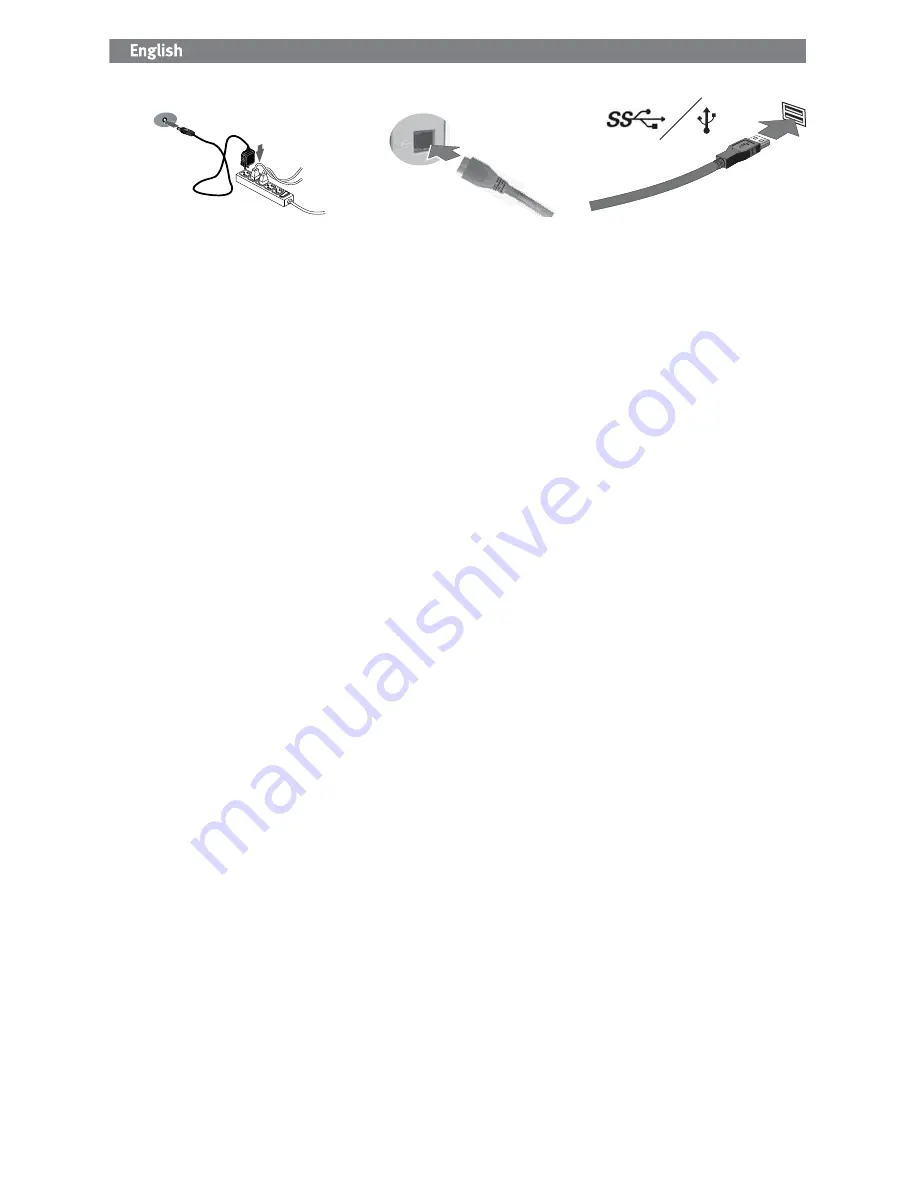
2
Quick Install
NOTE:
If you are using a USB 3.0 adapter card, make sure the correct drivers for the adapter have been installed
and the card is recognized by the operating system.
1. Connect the included power supply to the back of the drive and to a power outlet.
CAUTION!
Do not move the drive while it is powered up to avoid drive damage or data loss.
2. Use the included USB cable to connect the drive to your computer. Turn the drive on.
NOTE:
The cable works with USB 3.0 and USB 2.0 host connections. For highest performance, connect the drive
to a USB 3.0 connection (adapter card or built-in). When the drive is connected to USB 2.0, its performance will
be limited to USB 2.0 transfer speeds (maximum 480 Mbits/sec).
3. The drive icon should appear in My Computer or Windows Explorer.
Using Your Drive
Disconnecting the Drive
CAUTION!
To prevent data loss, do not disconnect the drive during data transfer (activity light flashing).
Use the
Safely Remove Hardware
icon in the Windows taskbar before disconnecting.
Backing Up with Your Drive
Iomega recommends periodic system backups and more frequent data backups to ensure that your critical data is
always protected. The frequency of your backup should depend on the importance of your data. To protect your data,
you can simply drag and drop copies of your critical files onto the drive, or you can use backup software to schedule
regular backups.
CAUTION!
Any data storage device can fail. Always keep at least two copies on different disks for all critical data files.
Troubleshooting
Drive does not appear in My Computer or Windows Explorer
• Try rebooting your computer.
• Check all connections.
• Make sure the drive is receiving power (check if the status light is on). Make sure the power switch is on.
• Make sure you are using the USB cable that came with your drive.
• Connect the data cable directly to the port on the computer or on the USB card. Do not plug the drive’s data
cable into a hub or keyboard.
• Check your BIOS to ensure USB is enabled. Please refer to your computer’s user’s guide or manual for
instructions.
If the drive is still not assigned a drive letter, please visit the support area on
www.iomega.com
.
PC will not start up
If your PC will not start up when the drive is connected, the BIOS on the computer probably has a conflict with large
capacity removable drives. To work around this problem, power off the drive when starting the computer. Power on
the drive after the computer finishes starting up.
Complete User's Manual
A complete user’s manual in HTML format is available on the support area on
www.iomega.com
.
���
���

















